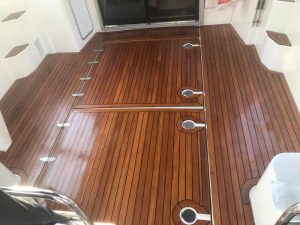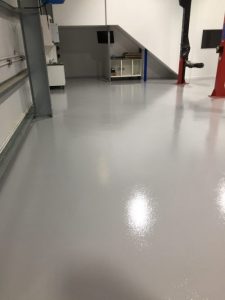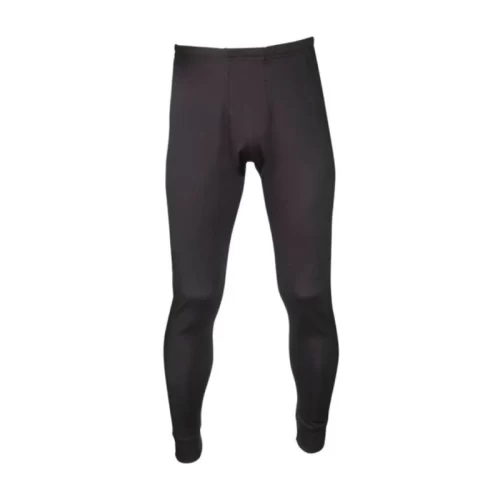All Blogs, Health and Safety, Paint Equipment
Mastering Safety: The Essential Role of PPE & Workwear in Painting and Decorating Projects
PPE Workwear | The Essential Role of Painters Gear in Painting
As a professional in the painting and decorating industry, I cannot stress enough the importance of safety and the role that painters gear plays in ensuring a safe work environment.
In this blog, I will discuss the potential hazards in painting and decorating projects, the essential painters gear for protection and safety, the importance of painters protective clothing, personal protective equipment (PPE) for painters, proper use and maintenance of painting safety equipment, tips for choosing the right painters gear for your project, ensuring a safe work environment through proper equipment painting practices, and additional resources for mastering painting safety.
By the end of this article, I hope you will gain a better understanding of the role painters gear plays in creating safe and successful projects.
Introduction to Painting Safety (PPE Workwear)
Painting and decorating projects can be both fun and fulfilling, but they also come with inherent risks. As a painter, you’re exposed to various hazards, such as falling from heights, exposure to harmful chemicals, and potential accidents involving tools and equipment. These risks can lead to serious injuries, long-term health problems, and even fatalities.
This is where the importance of painters gear comes in. Painters gear is specifically designed to protect you from the dangers associated with painting and decorating projects, providing a much-needed barrier between you and potential hazards. Investing in high-quality painters gear is not only essential for your safety, but it also allows you to work more efficiently and comfortably, leading to better results in your projects.
Identifying Potential Hazards in Painting and Decorating Projects without PPE Workwear
To fully appreciate the importance of painters gear, it’s crucial to understand the potential hazards in painting and decorating projects. Some common risks include:
- Falls: Working at heights, such as on ladders or scaffolds, can lead to falls, resulting in severe injuries or even death. Painters gear like safety harnesses, fall arrest systems, and proper footwear can help prevent these accidents.
- Chemical exposure: Paints and solvents often contain harmful chemicals that can cause skin irritation, respiratory problems, and other health issues. Protective clothing, gloves, and respirators are essential to minimize exposure to these substances.
- Injuries from tools and equipment: Painters use various tools and equipment, such as sprayers, sanders, and scrapers, which can cause injuries if not used correctly. Proper training and the use of safety equipment can reduce the risk of accidents.
- Slips, trips, and falls: Wet or slippery surfaces are common in painting and decorating projects, increasing the likelihood of slips, trips, and falls. Wearing appropriate footwear with slip-resistant soles can help prevent these accidents.
Essential Painters Gear for Protection and Safety
Now that we’ve identified some potential hazards, let’s discuss the essential painters gear for protection and safety. This includes the need for PPE Workwear such as:
- Protective clothing: Painters protective clothing, such as coveralls, is designed to shield your skin from paint splashes, chemical exposure, and abrasions. It is essential to wear clothing that is not only comfortable but also made from durable, chemical-resistant materials. Our Chemsplash Pro 63 is highly recommended.
- Gloves: Chemical-resistant gloves are crucial in protecting your hands from direct contact with hazardous substances. They should be made from materials like nitrile or latex, which offer excellent chemical resistance and dexterity. Typically most painters use disposable latex gloves
- Eyewear: Safety goggles or glasses are necessary to protect your eyes from paint splashes, debris, and harmful UV rays when working outdoors. Ensure that your eyewear provides adequate coverage and meets safety standards.
- Respirators: A respirator is a vital piece of painters protective gear, protecting your lungs from hazardous fumes and dust. Choose a respirator with the appropriate filters for the specific chemicals you’ll be working with.
- Hearing protection: Prolonged exposure to loud noises, such as from power tools or sanders, can damage your hearing. Earplugs or earmuffs are essential for protecting your ears from excessive noise levels.
- Footwear: Proper footwear with slip-resistant soles and adequate ankle support is crucial for preventing slips, trips, and falls.
Browse our dedicated Workwear & PPE
Importance of Painters Protective Clothing
Painters protective clothing is an essential component of painters gear. It serves several purposes, including:
- Shielding your skin from harmful substances: Protective clothing prevents direct contact with paint, solvents, and other chemicals, reducing the risk of skin irritation, burns, or allergic reactions.
- Preventing contamination: Wearing protective clothing prevents the spread of paint and other substances to your regular clothes, your vehicle, and your home, protecting your belongings and loved ones from potential hazards.
- Enhancing visibility: High-visibility clothing is particularly important when working in low-light conditions or near traffic, reducing the risk of accidents by making you more visible to others.
- Promoting a professional image: Wearing painters protective clothing not only ensures your safety but also presents a professional image to clients, increasing their confidence in your skills and expertise.
Personal Protective Equipment (PPE Workwear) for Painters
Personal protective equipment (PPE) is a critical aspect of painters gear, designed to protect specific parts of your body from injury or exposure to harmful substances. PPE for painters includes:
- Head protection: Hard hats or bump caps can protect your head from falling objects, low-hanging structures, and accidental bumps.
- Eye protection: Safety goggles or glasses shield your eyes from paint splashes, debris, and harmful UV rays.
- Hearing protection: Earplugs or earmuffs protect your ears from excessive noise levels generated by power tools and equipment.
- Respiratory protection: Respirators with appropriate filters safeguard your lungs from hazardous fumes and dust.
- Hand protection: Chemical-resistant gloves shield your hands from direct contact with hazardous substances.
- Foot protection: Slip-resistant footwear with adequate ankle support prevents slips, trips, and falls.
Proper Use and Maintenance of Painting Safety Equipment
To ensure the effectiveness of your painters gear, it’s essential to use and maintain it properly. Some tips for proper use and maintenance include:
- Inspect your gear regularly: Before each use, inspect your painters gear for signs of wear, damage, or contamination. Replace any damaged or worn-out items immediately.
- Clean your gear after each use: Following manufacturer guidelines, clean your painters gear after each use to remove paint, dirt, and other contaminants. This helps prolong the life of your gear and ensures it remains effective in protecting you from hazards.
- Store your gear properly: Store your painters gear in a clean, dry location, away from direct sunlight and extreme temperatures. This prevents damage and ensures your gear remains in good condition.
- Replace filters and cartridges as needed: Respirator filters and cartridges have a limited lifespan and should be replaced according to the manufacturer’s recommendations or when they become clogged or damaged.
- Follow manufacturer guidelines: Always follow the manufacturer’s guidelines for the proper use, maintenance, and storage of your painters gear. This ensures your gear remains effective in protecting you from hazards.
Tips for Choosing the Right Painters Gear for Your Project
Selecting the right painters gear for your project is essential for ensuring your safety and comfort. Here are some tips to help you choose the right gear:
- Consider the specific hazards of your project: Evaluate the hazards associated with your project, such as the type of chemicals you’ll be using, the height at which you’ll be working, and the noise levels. Choose painters gear that provides adequate protection against these specific hazards.
- Choose gear that fits properly: Ill-fitting painters gear can be uncomfortable and, in some cases, less effective in protecting you from hazards. Ensure that your gear fits correctly, providing enough freedom of movement without being too loose or too tight.
- Select gear made from high-quality materials: Your painters gear should be made from durable, chemical-resistant materials that can withstand the rigors of your work. Investing in high-quality gear will ensure it provides long-lasting protection and comfort.
- Look for gear that meets safety standards: Choose painters gear that meets or exceeds relevant safety standards. This ensures your gear has been tested and proven to provide adequate protection againstpotential hazards.
- Consider your budget: While it’s essential to invest in high-quality painters gear, it’s also crucial to consider your budget. Look for gear that balances quality and affordability, ensuring you can work safely without breaking the bank.
Ensuring a Safe Work Environment Through Proper Equipment Painting Practices
While painters gear is essential for protecting you from hazards, it’s also crucial to follow proper equipment painting practices to create a safe work environment. Some tips for ensuring a safe work environment include:
- Provide adequate training: Ensure that all workers receive adequate training on the proper use of equipment and safety procedures. This includes training on how to use painters gear correctly.
- Maintain a clean work environment: Keep your workspace clean and free of clutter to prevent slips, trips, and falls. Dispose of paint and other hazardous materials properly.
- Use appropriate equipment: Use equipment that is appropriate for the task at hand. For example, use ladders or scaffolds instead of chairs or tables when working at heights.
- Follow safety guidelines: Always follow safety guidelines and regulations when working with hazardous materials or in hazardous environments. This includes wearing appropriate painters gear and following proper equipment painting practices.
- Address safety concerns promptly: Address any safety concerns promptly to prevent accidents and injuries. This includes fixing faulty equipment and addressing potential hazards.
Additional Resources for Mastering Painting Safety
There are many resources available to help you master painting safety and ensure a safe work environment. Some of these resources include:
- OSHA: The Occupational Safety and Health Administration (OSHA) provides guidelines and regulations for workplace safety, including painting and decorating projects.
- Manufacturer guidelines: Always follow the manufacturer’s guidelines for using, maintaining, and storing your painters gear.
- Training programs: Consider enrolling in training programs that focus on painting safety and equipment painting practices.
- Professional organizations: Joining professional organizations can provide access to resources and networking opportunities, helping you stay up-to-date on painting safety best practices.
- Safety consultants: Consider hiring a safety consultant to evaluate your work environment and provide recommendations for improving safety.
Conclusion: The Role of Painters Gear in Creating Safe and Successful Projects
In conclusion, painters gear plays an essential role in creating safe and successful painting and decorating projects. By understanding the potential hazards associated with these projects, identifying essential painters gear, and following proper equipment painting practices, you can ensure a safe work environment and protect yourself from potential accidents and injuries.
Investing in high-quality painters gear is an investment in your safety, allowing you to work more efficiently and comfortably while achieving better results in your projects. Remember to follow manufacturer guidelines, maintain your gear properly, and stay up-to-date on the latest safety best practices to ensure your safety and success in the painting and decorating industry.
So, what are you waiting for? Get your painters gear today and start creating safe and successful projects.
Browse our dedicated Workwear & PPE
Contacting us is easy!
Email: [email protected]
Call Us: 01942 884 122
Contact form: https://www.palatinepaints.co.uk/contact-us
Live Chat Service: Press the small blue icon at the bottom left of your screen.









































